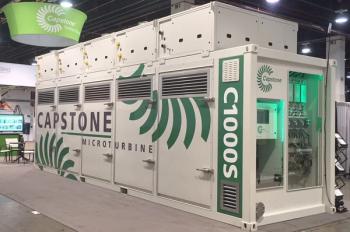
South Asia identifies 16,000 MW microhydro power potential
Energy sector professionals from the South Asian countries have estimated a rich potential of approximately 16,000 MW of microhydro power in India, Nepal, Pakistan and Sri Lanka. While India has identified 15,384 MW in small hydro potential, Nepal is looking at an additional 13,000 KW microhydro capacity by 2013. This is attainable with the implementation of certain policies in the construction and operation of microhydro facilities that are capable of achieving additional targets of about 300 MW micro and small hydro power every year.
Implementation of microhydro program
Implementation of sustainable microhydro power policies and technologies is a challenge because such projects are usually located in remote villages in hilly terrain serving small populations. Maintenance and installation of a grid line in these areas is expensive, and bill payment is challenging. In addition, grid operators have not found complete solutions yet for maintaining frequency control with grid connected renewables. Therefore, transmission utilities are usually reluctant to connect these projects to the grid.
The participants advocated that involvement of local communities, through village energy committees, for maintenance of transmission and distribution lines and electricity bill payment recovery can solve the problems associated with the implementation of the program.
Regional potential in India
Of all the South Asian nations, India alone has identified 15,384 MW in small hydro potential, of which 3042 MW is currently installed. Targets are set for an additional 300 MW of added capacity per year. To support this, to date, 23 states have announced policies for setting up commercial small hydro power plants. Uttarakhand and Arunachal Pradesh have come up with specific policies, and the Ministry of New and Renewable Energy provides incentives for microhydro power projects with capacities up to 100 kW and 100-1000 kW.
The Ministry of Power, under the Decentralized Distribution and Generation scheme, provides capital grants of 90% for off-grid renewable energy projects including microhydro projects. The private sector has commissioned 285 SHP projects aggregating 1,423 MW to date.
Project development in Nepal
Nepal is rich in hydro potential, and has built 22,000 KW of installed microhydro capacity to date. By 2013, the country expects an additional 13,000 KW. The microhydro private sector of Nepal is extending its services but policy reforms are still needed to provide more support to off-grid renewable energy options such as microhydro.
Current issues facing Nepal's microhydro sector include a high dependency on donor fund; high cost and low affordability; and low economic return due to negligible industrial use of electricity (low load factor). The interconnection and grid connection has not yet materialized; the microhydro sector is not fully commercialized yet; and there is difficulty in reaching out to more remote areas and marginalized people.
Challenges faced by Pakistan and Sri Lanka
Pakistan has 500 microhydro plants installed to date providing 7,000 MW of electricity and serving over 59,000 households. Project development in remote areas is difficult due to lack of domestic equipment manufacturers, education/training deficits, insufficient policies and tariff structures, and inadequate funding. But microhydro could serve a much needed demand for electricity access in remote, mountainous communities.
Sri Lanka gets over 50% of its total energy generated from renewable. With a goal of 20% by 2020 from non-conventional renewable sources (generation under 10 MW), the country has 183 MW of installed capacity in mini hydro projects, with over 2/3 of this under standardized power purchase agreements. Ceylon Electricity Board credits its framework of tax exemptions and power purchase agreements for promoting private sector investment in renewables, including microhydro. Sri Lanka's unique model of allowing private sector developers to build transmission and distribution interconnection lines (under CEB supervision) has been successful so far.
Decentralized generation
In a meet at Kathmandu, the U.S. Agency for International Development (USAID) South Asia Regional Initiative for Energy (SARI/Energy) and the South Asian Centre of Excellence in Microhydro (RCEMH), through the Nepal Alternative Energy Promotion Centre (AEPC) recently discussed implementation of the microhydro program.
Participants agreed that decentralized generation and distribution in remotely located areas can be cost effective if maintained by the local community itself. Involvement of local communities in the planning, implementation, operation. Maintenance of distributed generation projects will create a sense of belongingness and responsibility, and enable success of the project.
Newsletter
Power your knowledge with the latest in turbine technology, engineering advances, and energy solutions—subscribe to Turbomachinery International today.





